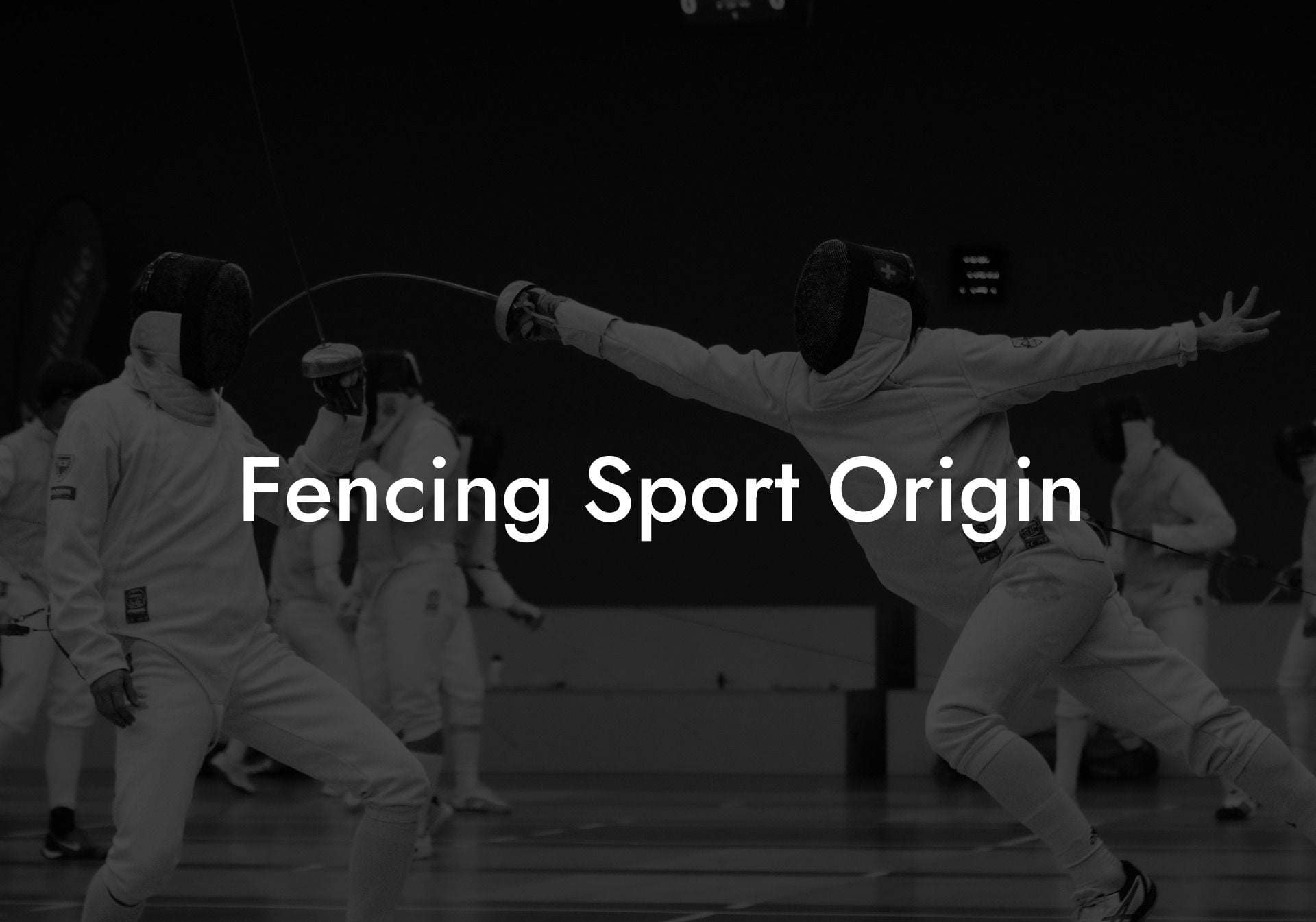Discover the captivating history and origins of the modern sport of fencing. Delve into its ancient beginnings and how it transformed from a combative practice to a sophisticated and thrilling sport enjoyed by many today.
The Ancient Roots of Fencing
Fencing as a sport traces its origins to ancient civilizations such as Egypt, Greece, and Rome. Dating back to 1190 BC, carvings in Egyptian temples demonstrate the presence of organized fencing matches with combatants wearing protective gear and brandishing blunted weapons.
Similarly, Greek and Roman warriors valued fencing as an essential skill in their military training. The Greek martial art of "hoplomachia" involved battling with sword and shield, while Roman gladiators practiced a combat style called "armatura" to prepare for arena fights.
Medieval Europe and the Development of Fencing Schools
As the medieval period began, swordsmanship rose to prominence among knights and nobility. Dueling became a widespread practice to settle disputes or showcase one's skill and bravery. This led to the establishment of fencing schools where formal training and standardized techniques were taught to aspiring combatants.
By the late 14th century, the German fencing master Johannes Liechtenauer developed his own fencing system, which laid the groundwork for future European swordsmanship. Other notable fencing masters of the period include Fiore dei Liberi from Italy and Hans Talhoffer from Germany.
The Renaissance and the Birth of Modern Fencing
The Renaissance period witnessed groundbreaking advancements in fencing, particularly in Italy and Spain. Italian masters such as Achille Marozzo and Camillo Agrippa revolutionized the sport by introducing lighter, more nimble weapons like the rapier – a stark departure from the heavy, cumbersome swords of the medieval era.
This shift to lighter weapons paved the way for the development of techniques that prioritized speed, precision, and strategy over brute force. With safety becoming a growing concern, fencing masters also introduced protective gear such as masks and padded jackets while training.
The 16th and 17th centuries saw the publication of several influential fencing manuals, including Agrippa's "Treatise on the Science of Arms" (1553) and the anonymous "Fencing Master" (1628). These treatises were instrumental in disseminating knowledge about fencing techniques and evolving the sport into its modern form.
Fencing in the 18th and 19th Centuries: The French Influence and Olympic Recognition
As fencing gained popularity across Europe, France emerged as a leading influence due to the refinement of techniques and the establishment of prestigious fencing academies. French fencing masters such as Domenico Angelo and his son Henry Angelo significantly impacted the growth of the sport through their instruction and publications.
The invention of the foil – a lighter, more flexible weapon with a blunted tip – allowed for more emphasis on speed and technique. The development of the epee and sabre soon followed, each with their unique rules and scoring systems.
In 1896, fencing was included in the first modern Olympic Games in Athens. With the creation of the International Fencing Federation (FIE) in 1913, the sport saw further standardization of rules, regulations, and equipment, solidifying its status as a modern international sport.
Fencing Sport Origin Example:
Imagine stepping into a 16th-century Italian fencing academy, where skilled instructors demonstrate the elegant moves of rapier fencing. The clash of steel echoes through the hall as duelists engage in precise, strategic bouts. This vivid scene from the Renaissance era illustrates the significant transformation of fencing from its ancient roots to the refined sport we recognize today.
Now that you've uncovered the fascinating history and origins of fencing, why not immerse yourself further in the world of this captivating sport? Explore more informative and engaging guides on Anchorage Fencing Club and share this article with fellow enthusiasts to inspire a newfound appreciation for the rich legacy of fencing.













